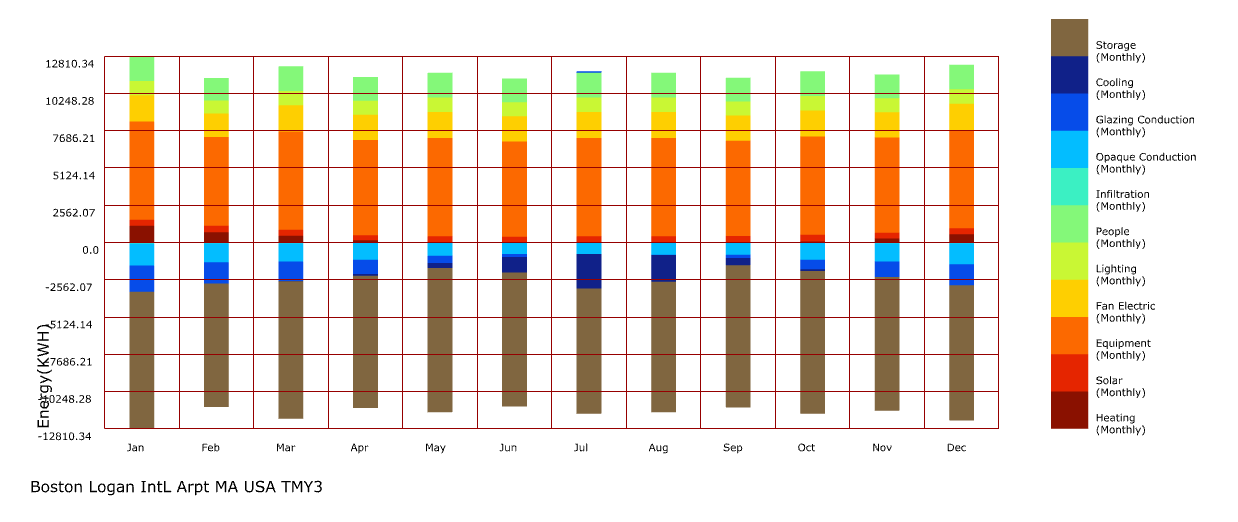Hi,
I’m running a simulation on a small space which has a relatively high process load throughout the year. The space is a coffee shop, so typical retail hours. I am anticipating the space to use packaged single zone RTU, as the building area is small and single story. I’ve set my HVACSystem to #3 (Packaged Single Zone -AC) The location of this space is in the US Northeast, so hot summers and cold winters. I only have ventilation set at my zone loads component. When bringing in ventilation air through a RTU, what is the process to account for the mechanical ventilation?
My energy balance is outputting some strange values which are confusing me. First, what does the "storage’ value of the heat balance represent? The storage component is the most dramatic portion of my energy balance. See the image below. Could someone direct me on why this could be occurring? Thanks.
@mschulte
The thermal storage value represents the thermal energy that is stored as thermal mass in the walls, floors and interior objects of your model. The energy balance is calculated with the assumption that the heat gain in your building (+ values) is balanced out by the heat loss in your building (- values). This is because the mechanical heating/cooling system will supply energy in the correct proportions to maintain the balance, or thermal equilibrium of your building. In practice, when you add up all the components from the EP Results component, it’s usually not balanced by a small amount, which is the small amount of heat that is trapped in as thermal mass, and is not accounted for in any of the EnergyPlus outputs. Hence it is calculated after the simulation in the component. Specifically is calculated as the difference between your gains and losses. In your case, the reason why it is so large, is because your gains and losses are significantly unbalanced.
The reason they’re unbalanced, is the real problem here. They’re unbalanced because the Read EP Results components outputs the electrical/gas energy (the work) used to supply heating/cooling energy, not the actual thermal energy. The ratio of thermal energy to work is not equivalent. For heating systems, that ratio can be around 0.8, for cooling systems it can be 3 or 5. In your case, you have a very high ratio for cooling, which is why your cooling load is so low, which in turn is computing a high thermal storage component to try and (incorrectly) balance the loads.
For these reasons, the heat balance component can’t be used with HVAC systems, you have to use it with a ideal air loads system, which is essentially an ‘idealized’ HVAC system that has a one to one ratio of work to energy. You can view your HVAC systems-based energy breakdown using just the monthly bar chart.
S
9 Likes
